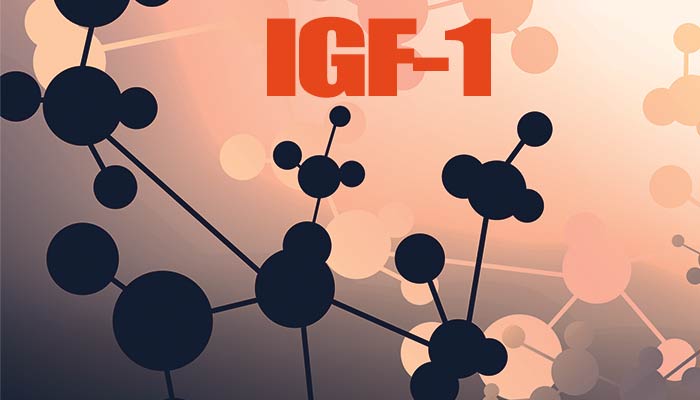What is IGF-1?
It is a peptide hormone (similar to a protein) called “Insulin like growth factor” of type 1 produced by the liver and whose intervention in a wide variety of physiological processes is important. This includes muscle growth, connective tissue regeneration (such as cartilage) and nerve conduction. IGF-1 works in synergy with growth hormone and insulin to provide an environment conducive to muscle growth, limiting muscle breakdown and even promoting fat loss.
The effects of IGF-1
- IGF-1 can provide, in addition to hypertrophy, muscle cell hyperplasia. Hyperplasia is an actual increase in the number of muscle cells rather than a simple increase in their size (although this can only occur when the nutritional protein intake is high enough).
- IGF-1 has the special ability to help athletes integrate new skills more quickly, being known to be a neuroprotector and neuropromoter. Interestingly, these effects may also play an important role in stopping or at least slowing down age-related degenerative diseases (such as Parkinson’s and Alzheimer’s).
- IGF aids in the healing process after an injury, as it promotes the healthy development of connective tissue. It allows the maintenance of the strength of an affected joint (by maintaining the level of synovial fluid) and can have beneficial effects on bone mass.
- IGF-1 promotes a positive nitrogen balance, a prerequisite for the functioning of anabolism.
Facts about IGF-1
- IGF-1 by itself cannot provide performance enhancement; its effects are best when taken in combination with growth hormone, insulin, thyroid hormone preparations and testosterone esters. When combined properly, the results can be phenomenal and long lasting.
- IGF-1 is available as a modified peptide, in a slightly larger molecule than the original, named Long R3 IGF-1, but also slightly more potent.
- Be prepared to pay for this peptide costing on average $150 for the 1000 micrograms.
- The effective daily dose of IGF-1 appears to be between 60 and 120 micrograms, with dosages outside this range being completely unnecessary. Higher doses produce too many side effects with no added benefit, while lower doses are at the limit of normal concentrations in the body. Normally, IGF-1 is administered after a workout, in the targeted muscle group.
- IGF-1 should never be taken by people with a history of cancer because it can accelerate its mutation and development.












